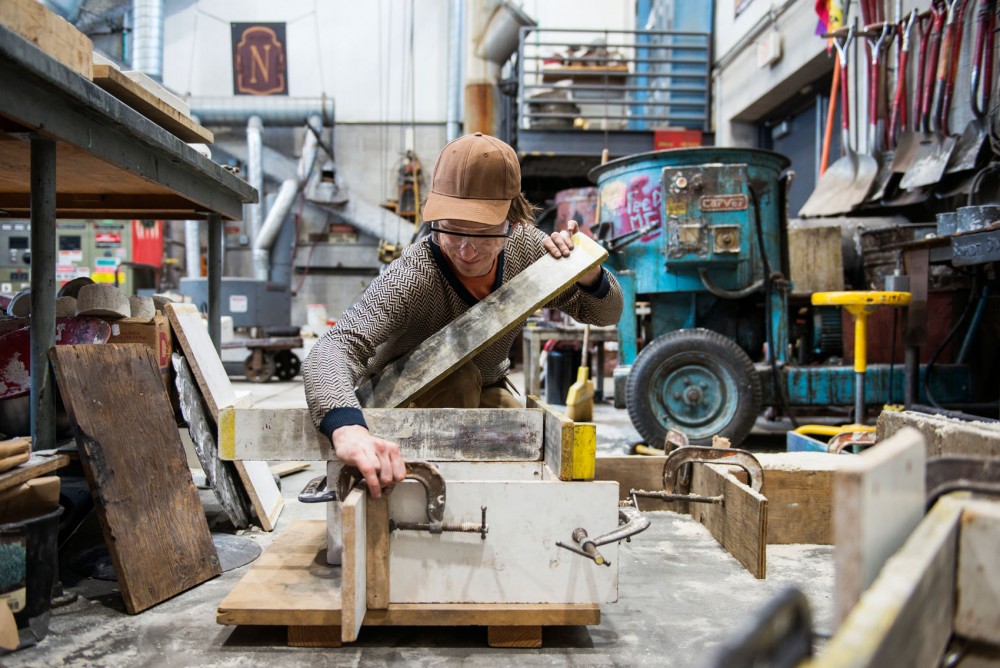Pouring molten iron and jamming out to disco music aren’t two activities that usually go together.
This Friday from noon to 4 p.m., the Regis Center’s foundry will hold one of its annual iron pours, where students, professors and visiting artists will work together to melt down and pour molten iron for projects they’ve been working on.
The iron pour’s theme is “Iron Disco,” and the electronic duo Beatrix Jar will be DJing the event. The pour is free and open to the public.
“We open up the top of the furnace, and there’s a huge jet of fire that shoots out the top. And then we got to pour barrels of stuff down into that. So you’re standing there with this 3,000-degree heat shooting up at you, and you’re throwing things in,” Louie Darang, a junior in the BFA program, said. “There’s this element of performance, ritual and theater to it — sparks, fire and that very present element of danger.”
Darang is studying 2D traditional media and metal casting. He is an advanced member of the art department’s foundry class, which teaches skills in foundry and metalwork. Foundry is the name for a workshop used for casting metal.
Assistant professor of sculpture Tamsie Ringler teaches the class, where students meet twice a week from 6 to 9 p.m. to work on projects and learn skills in the foundry.
Two years ago, Ringler replaced sculpture professor Wayne Potratz, who taught sculpture at the University for 45 years. The annual iron pours were traditions he established.
Potratz will be returning for this pour as a guest artist.
“The interesting thing about iron casting is it’s a community-based practice. You need a group of people to make it happen. You can’t just do it by yourself in the studio,” Ringler said. “One of the exciting things about this pour is that we bring in a lot of different people from the community.”
Ringler has invited professors and students from several institutions like Anoka-Ramsey Community College and St. Cloud State University to join the iron pour.
Using iron casting as a method for sculpture is a fairly new development, having only come into common use in the ’60s. Before then, manufacturers used cast-iron mainly for things like frying pans and manhole covers.
Artists began exploring the medium due to its functional history.
For students, the experience of working with molten metal is appealing because it is immediate and direct.
“I love how the material works. It’s something in your everyday life that’s solid, and you’re now moving it in your hands and you’re experiencing it as a liquid,” Stephen Edstrom, a beginning foundry student, said.
He is pursuing a BFA in metalworking and printmaking and working on a 2-foot goblet mold that he will cast at the pour.
The iron they use in the furnace comes from old cast-iron radiators the class receives from building renovations. In past years, they used the radiators salvaged from the Northrop renovation.
The class breaks apart the radiators and throws the pieces into the furnace to be melted and poured into molds.
“There’s a primalness [sic] to it,” Edstrom said. “The fire and the energy level of the people there.”
47th Annual Iron Pour: “Iron Disco”
Where Regis Center for Art Foundry, 405 21st Ave., Minneapolis
When Noon-4 p.m. Friday
Cost Free








